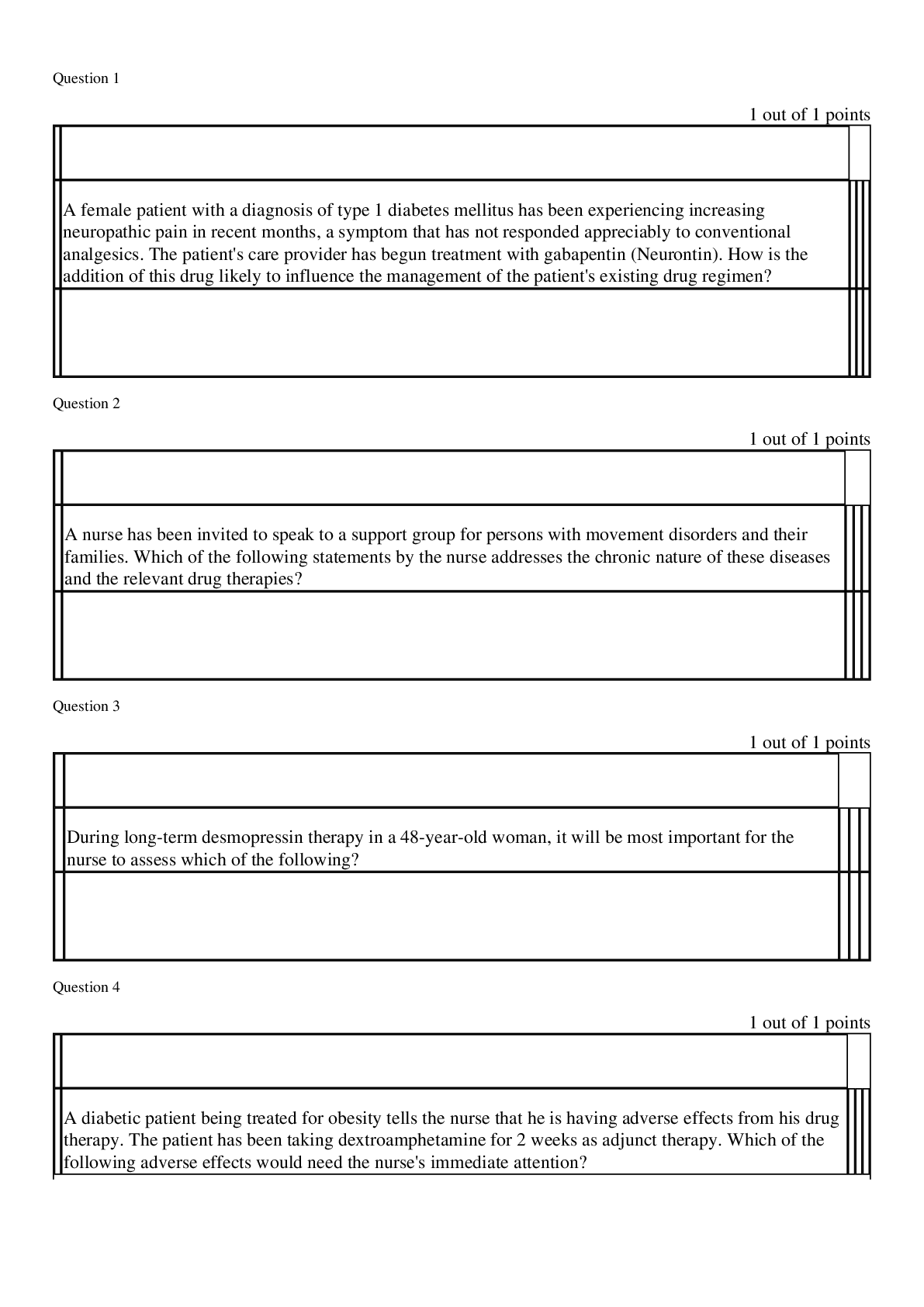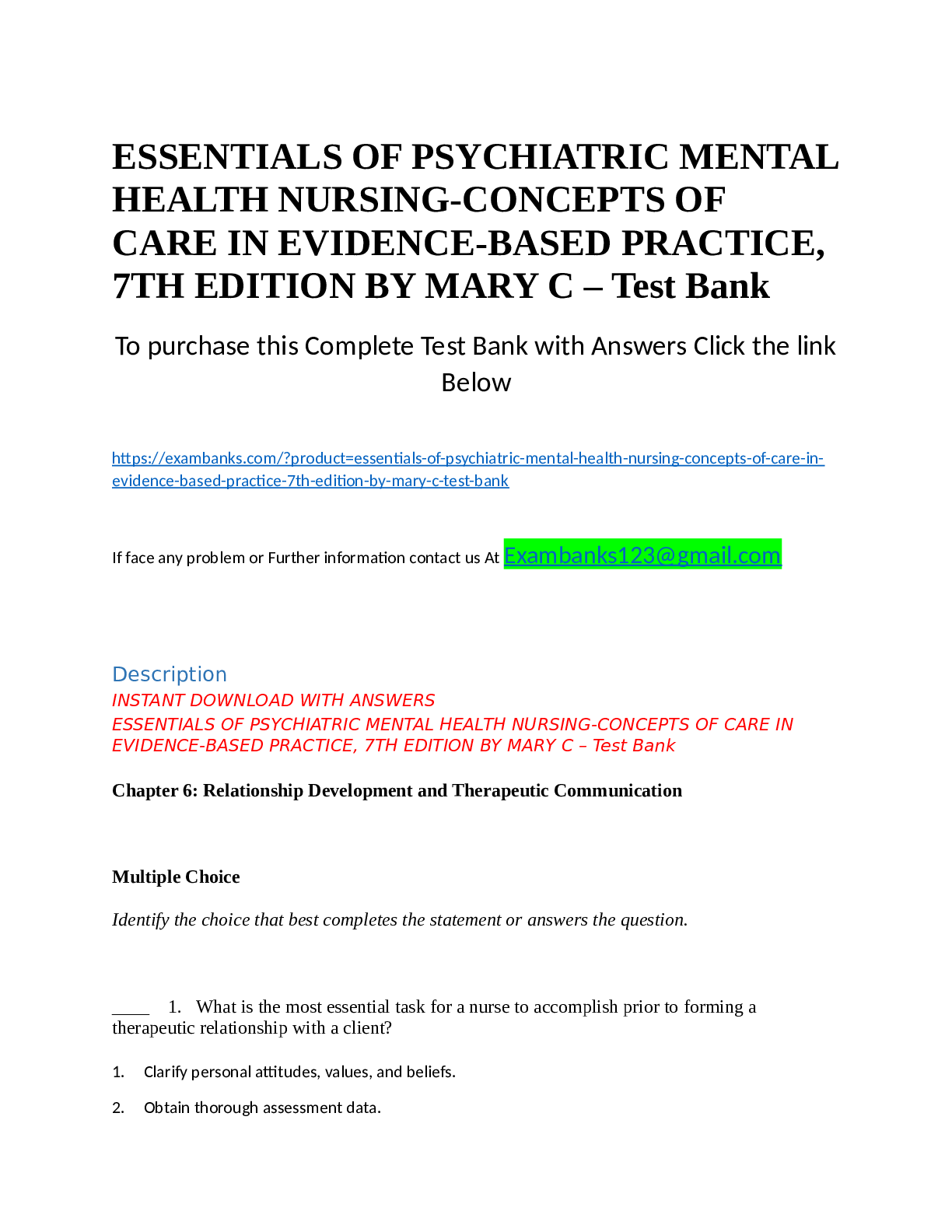Brain And Behavior An Introduction To Biological 4th Edition -Test Bank
Document Content and Description Below
1. Lissencephalic individuals usually have: 1. Greater than normal intelligence 2. Greater than normal amount of brain tissue 3. Epilepsy and severe cognitive deficits (*) 4. More myelinated corti... cal neurons 2. The case study of Karen, the lissencephalic individual who was well above average functionally, illustrates our current lack of understanding about: 1. Brain development 2. The relationship between brain structure and function 3. Brain plasticity 4. All of the above (*) 3. A typical lissencephalic individual would have major behavioral deficits, but the opening vignette of Karen illustrates that: 1. Brain and mind are distinct and separate 2. Effects of apparently identical brain impairment can vary greatly (*) 3. Her diagnosis is incorrect 4. Behavior can be predicted if we can “look inside” the brain 4. The central nervous system (CNS) consists of: 1. The cranial nerves that enter and leave the underside of the brain 2. The brain and the spinal cord (*) 3. The spinal cord and the brain stem 4. All neurons in the body 5. A nerve is a: 1. Single neuron 2. Tract of neurons in the CNS 3. Group of cell bodies 4. Bundle of axons in the periphery (*) [Show More]
Last updated: 2 years ago
Preview 1 out of 36 pages

Buy this document to get the full access instantly
Instant Download Access after purchase
Buy NowInstant download
We Accept:

Reviews( 0 )
$12.50
Can't find what you want? Try our AI powered Search
Document information
Connected school, study & course
About the document
Uploaded On
Feb 04, 2021
Number of pages
36
Written in
Additional information
This document has been written for:
Uploaded
Feb 04, 2021
Downloads
0
Views
90














